Spill Control is essential to workplace strategies to help keep workers and the working environment safe in the event of a liquid spill. The best way to manage a spill would be to first prevent it; however, employees must know how to manage spills effectively and the workplace must provide the correct product if it were to happen. Without taking proper steps, spills could be dangerous to the workers and pollute the environment.
The 6 Critical Steps for Safe Spill Response
The following steps can be used as a guide for first responders to spills. They provide a framework to build a customised spill response plan in combination with an assessment of your workplace. Contact ATOM Safety for expert advice on spill control products and training.
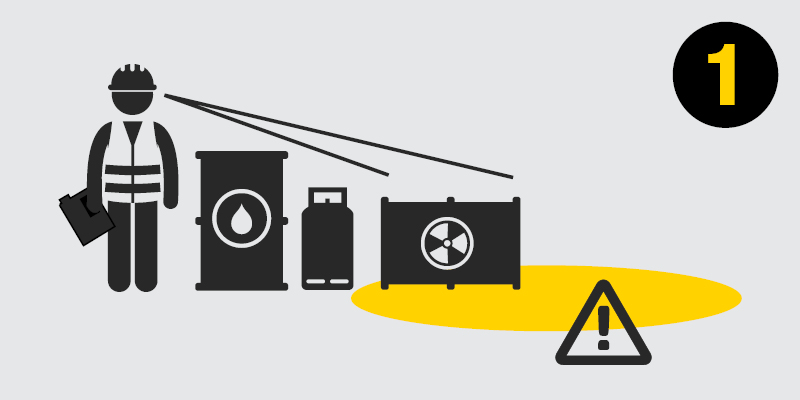
Assess the Risk
|
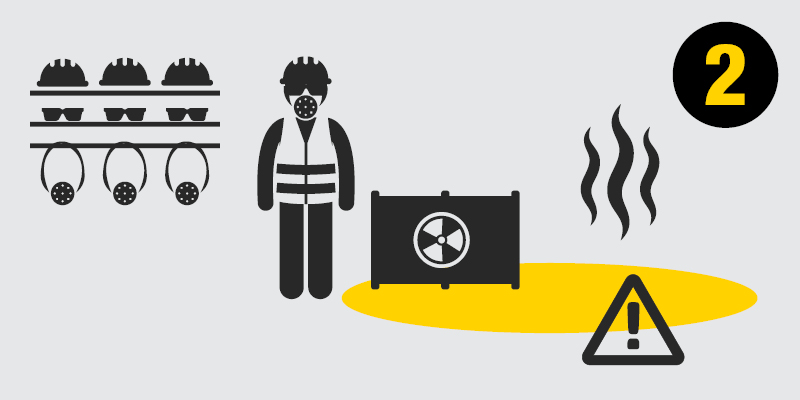
Protect Yourself & Others
|

Stop the Source
|
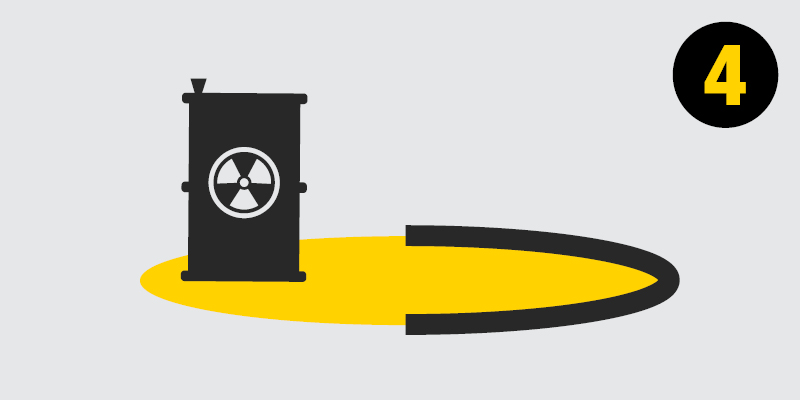
Contain the Spill
|

Clean Up the Spill
|

Report & Refill
|
How to Develop a Chemical Spill Emergency Response Plan
It's important to begin your spill response plan with a risk assessment. The purpose of this risk assessment is to identify chemical spill hazards, which means you need to look at the way the chemicals in your workplace are stored, handled and used. Consider things like:
- The type of chemical
- The form of chemical, e.g. liquid/solid, flammable/combustible
- Chemical quantities
- The estimated largest spill of each chemical
After you've completed your risk assessment you'll need to ensure that you have the appropriate equipment in place to deal with a spill. This would typically involve the supply of spill control products or full spill kits that are placed near chemical spill hazards. Spill kits contain a variety of spill control products and differ depending on the type of spill that needs to be cleaned.
Spill Kits
Spill kits contain a selection of absorbents and accessories that help workers take control of potentially hazardous spills in a safe and effective manner. Spill kits can be taken directly to the site of the spill and are easily identified based on their colour code. Spill kits are available in a range of sizes and types and are specific to a type of incident. The contents of a spill kit can vary based on the size and type, but they will usually contain some or all of;
- Absorbent floor sweep
- Polypropylene absorbent pads and pillows
- Booms and/or socks
- Personal Protective Equipment (PPE) including PVC gloves, safety goggles, disposable respirators and disposable coveralls
- Brooms
- Brush and dustpans
|
Spills of oil, fuel and water-based products, including paint, degreaser, coolant and bodily fluids. Products used for general purpose spills are coloured grey/white. |
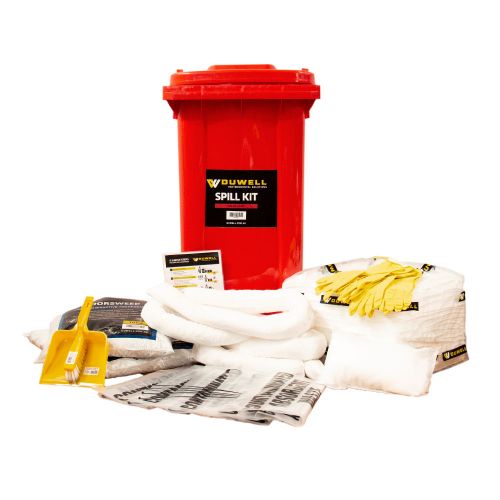
Oil and Fuel Spill Kit Oil and fuel-based spills that occur on the water are cleaned up with specific oil and fuel spill control products that absorb hydrocarbons while not absorbing any water or water-based products. These pads are coloured white and are useful for spills on the ocean, lakes, creeks or other bodies of water. |
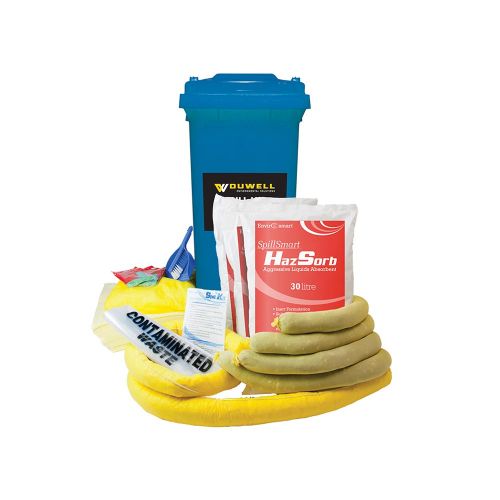
Chemical Spill Kit Spill control products that are specifically designed to clean up a Hazchem spill are made from specially designed inert (chemically inactive) absorbents that won't react with harsh chemicals. These products can be used against most chemicals, acids, bases, oils, fuels, paints degreasers, coolants, herbicides and pesticides. They are coloured yellow for quick identification in an emergency. |
Spill Control Products
 |
Absorbent Pads are used to clean up small spills. |
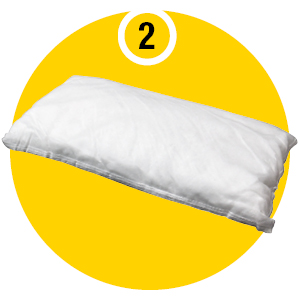 |
Absorbent Pillows are designed for heavy-duty spill containment, with the ability to absorb a lot more liquid than a pad. They are very flexible and can be manipulated to fit into tight spaces. Pillows are also ideal for placing under slow leaks until the cause of the leak can be rectified. |
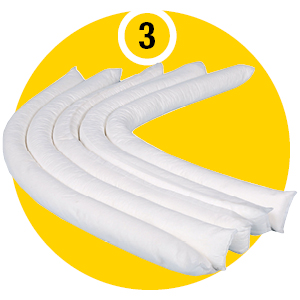 |
Absorbent Socks are used for containing a spill for easier control and clean-up. Their long, snake-like design makes them a great tool to surround a spill location and prevent liquid from spreading and creating further hazards. Many socks are also absorbent, creating an added advantage in the control of a spill. |
 |
Absorbent Booms are a similar shape to socks, but are much larger and can be linked together to control a wider area. Booms are also absorbent in most cases. |
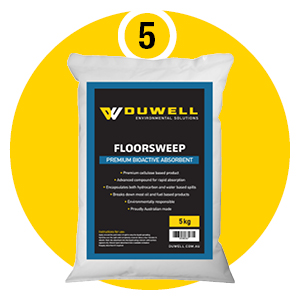 |
Absorbent Floorsweep is a natural cellulose material with enzymes to break down hydrocarbons. When looking at and touching floorsweep, it is best described as having sawdust-like qualities. Floorsweep is poured onto the spill, giving it time to absorb, which then allows for easy cleanup. Floorsweep's granules fully encapsulate oil spills and break down hydrocarbons, and can be easily disposed of in landfills depending on the local authority's conditions. Always consult local authorities on the proper disposal of contaminated waste materials. |
Browse All Spill Control Products
How to Choose Spill Control Products
When deciding on spill control products there are a few things to consider, including:
- What liquids might be spilled at your workplace? It's important to have access to the correct spill control products for the liquids that may be spilled at your workplace. For example, if there's potential for a spill on water, your workers should have access to oil and fuel absorbents. You may require a variety of absorbents to deal with all potential liquid spills at your workplace.
- What is the likely maximum size of a spill in your workplace? Being prepared for the worst is vital in spill control. Ensure you have the correct type and amount of spill control products to deal with the maximum potential spill.
- Are your staff trained in the use of spill control products? Stocking the correct spill control products is important but proper training in the use of these products is equally vital.
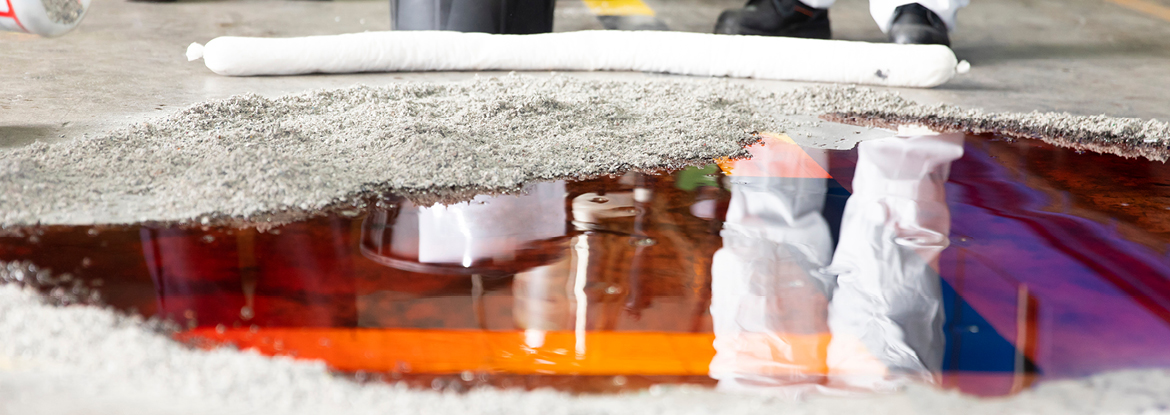
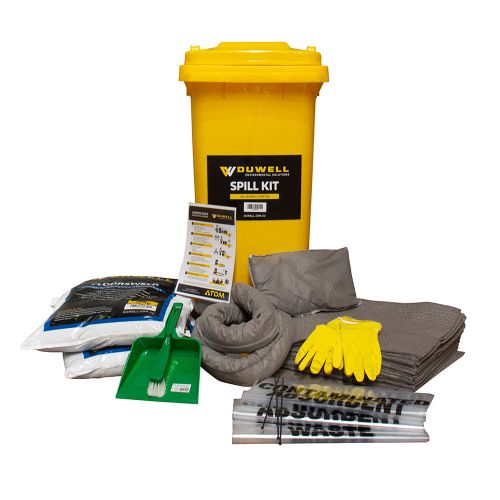 General Purpose Spill Kit
General Purpose Spill Kit